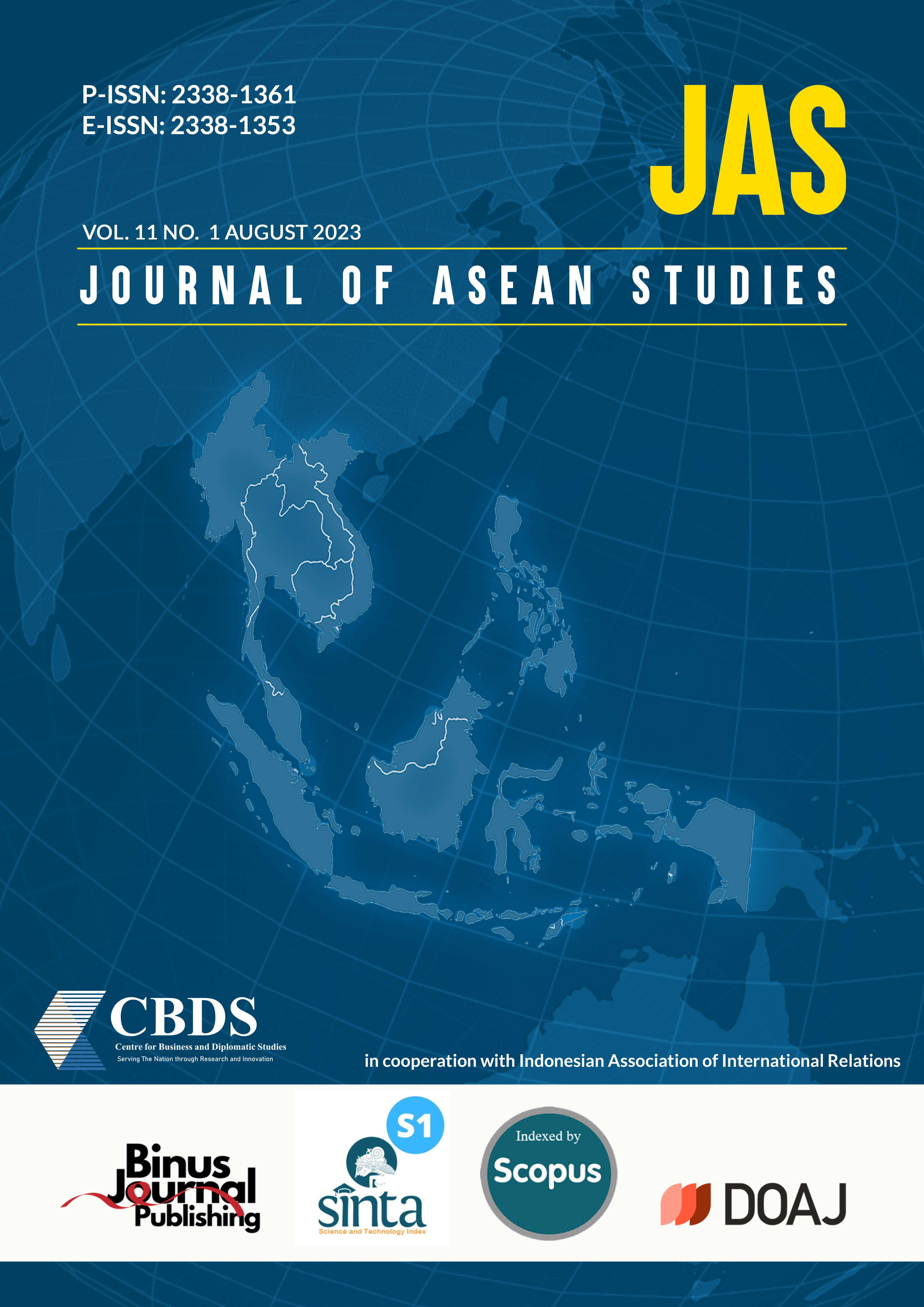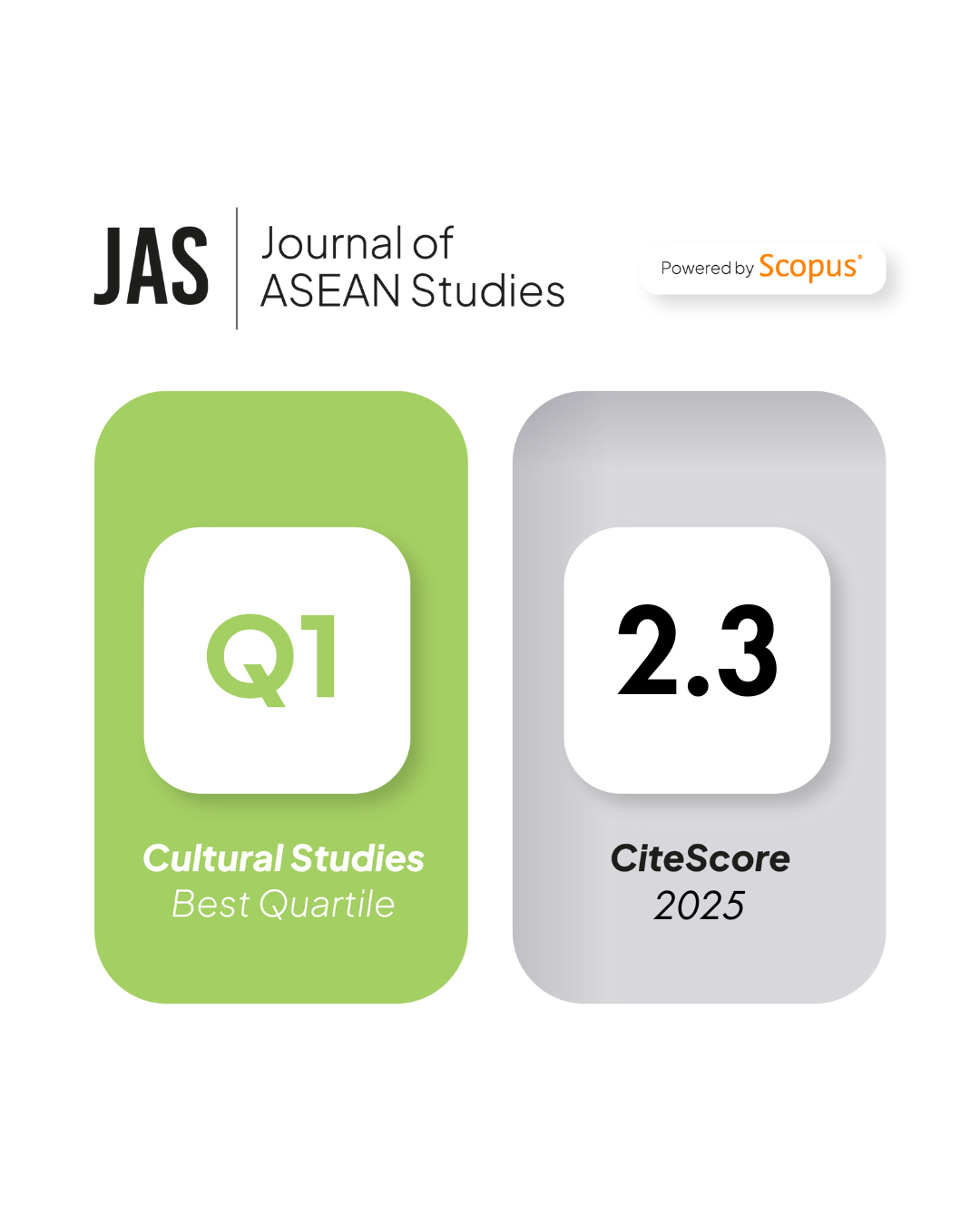“Local Food†Consumption: Does Locality Matter?
DOI:
https://doi.org/10.21512/jas.v11i1.7537Keywords:
local food, food tourism, consumption, urban, IndonesiaAbstract
The research examined the possibility of food being socialized as local food to replace local food’s role in food tourism. Food was one of the major attractions during a vacancy in ASEAN. The study of food in tourism rarely considered local food diversity in urban areas. The research addressed the other type of local food that is typical city food. In this case, there is no connection between the food and culture, traditions, history, or place, but the food is socialized as being indigenous. The local food consumption model was used to test whether the factors that affect tourists' local food consumption apply equally to foods socialized as local food. The research compared domestic tourist local food consumption factors in two food categories. 640 domestic tourists in a developed culinary tourism city in the Jakarta Metropolitan Area participated in this online survey. The comparative test of tourist characteristics found gender, the purpose of visit, age, and status of visit tourist characteristics associated with the food choice. The physical environment, exiting experience, and authentic experience were the motivational factors that differed between two food categories. It is possible that socialized foods will replace local food. The food locality did not always a matter. The results provide an overview of the position of local food in urban tourism. This has been considered the main attraction of food tourism in ASEAN countries.
References
Adam, A. M. (2020). Sample size determination in survey research. Journal of Scientific Research & Reports, 26(5), 90-97. https://doi.org/10.9734/jsrr/2020/v26i530263
Andersson, T. D., Mossberg, L., & Therkelsen, A. (2017). Food and tourism synergies: Perspectives on consumption, production and destination development. Scandinavian Journal of Hospitality and Tourism, 17(1), 1–8. https://doi.org/10.1080/15022250.2016.1275290
Avieli, N. (2013). What is ‘local food?’ Dynamic culinary heritage in the World Heritage Site of Hoi An, Vietnam. Journal of Heritage Tourism, 8(2–3), 120–132. https://doi.org/10.1080/1743873X.2013.767812
Berno, T., Dentice, G., & Wisansing, J. J. (2019). Kin kao laew reu young (‘have you eaten rice yet’)?: A new perspective on food and tourism in Thailand. In Food Tourism in Asia (pp. 17–30). Springer. http://dx.doi.org/10.1007/978-981-13-3624-9_2
Björk, P., & Kauppinen-Räisänen, H. (2019). Destination foodscape: A stage for travelers' food experience. Tourism Management, 71, 466–475. http://dx.doi.org/10.1016/j.tourman.2018.11.005
BPS-Statistics of Bekasi Municipality. (2020). Bekasi City in number. Bekasi: BPS-Statistics of Bekasi Municipality.
BPS-Statistics of Bogor Municipality. (2019). Bogor City in number. Bogor: BPS-Statistics of Bogor Municipality.
BPS-Statistics of Bogor Municipality. (2020). Bogor City in number. Bogor: BPS-Statistics of Bogor Municipality.
BPS-Statistics of Depok Municipality. (2020). Depok City in number. Depok: BPS-Statistics of Depok Municipality.
BPS-Statistics of Tangerang Municipality. (2020). Tangerang City in number. Tangerang: BPS-Statistics of Tangerang Municipality.
Chan, A., Tresna, P. W., & Suryadipura, D. (2017). Experiential value of Bandung food tourism. Review of Integrative Business and Economics Research, 6(1), 184.
Chang, R. C. Y., Kivela, J., & Mak, A. H. N. (2010). Food preferences of Chinese tourists. Annals of Tourism Research, 37(4), 989–1011.
Chen, Q., & Huang, R. (2018). Local food in China: A viable destination attraction. British Food Journal, 120(1), 146-157. https://doi.org/10.1108/BFJ-03-2017-0135
Chen, Q., & Huang, R. (2019). Understanding the role of local food in sustaining Chinese destinations. Current Issues in Tourism, 22(5), 544–560. http://dx.doi.org/10.1080/13683500.2018.1444020
Choe, J. Y. J., & Kim, S. S. (2019). Development and validation of a multidimensional tourist’s local food consumption value (TLFCV) scale. International Journal of Hospitality Management, 77, 245–259. https://doi.org/10.1016/j.ijhm.2018.07.004
Chuang, H.-T. (2009). The rise of culinary tourism and its transformation of food cultures: The National Cuisine of Taiwan. The Copenhagen Journal of Asian Studies, 27(2), 84–108.
Chyung, S. Y., Roberts, K., Swanson, I., & Hankinson, A. (2017). Evidenceâ€based survey design: The use of a midpoint on the Likert scale. Performance Improvement, 56(10), 15–23. https://doi.org/10.22439/cjas.v27i2.2542
Cohen, E. (1988). Authenticity and commoditization in tourism. Annals of Tourism Research, 15(3), 371–386. https://doi.org/10.1016/0160-7383(88)90028-X
Cohen, E., & Avieli, N. (2004). Food in tourism: Attraction and impediment. Annals of Tourism Research, 31(4), 755–778. http://dx.doi.org/10.1016/j.annals.2004.02.003
Hashemi, S., Mohammed, H. J., Kiumarsi, S., Kee, D. M. H., & Anarestani, B. B. (2021). Destinations food image and food neophobia on behavioral intentions: culinary tourist behavior in Malaysia. Journal of International Food & Agribusiness Marketing, 35(1), 66-87. https://doi.org/10.1080/08974438.2021.1943101
Hendijani, R. B. (2016). Effect of food experience on tourist satisfaction: The case of Indonesia. International Journal of Culture, Tourism and Hospitality Research. 10(3), 272-282. http://dx.doi.org/10.1108/IJCTHR-04-2015-0030
Himanshu, J. (2015). Evaluation of official tourism websites of South East Asian Nations (ASEAN) using the balanced score-card approach. International Journal of Hospitality & Tourism Systems, 8(2), 64–73.
Hsu, F. C., & Scott, N. (2020). Food experience, place attachment, destination image and the role of food-related personality traits. Journal of Hospitality and Tourism Management, 44(3), 79–87. http://dx.doi.org/10.1016/j.jhtm.2020.05.010
Irwansyah, I., & Triputra, P. (2016). Indonesia gastronomy brand: Netnography on virtual culinary community. The Social Sciences, 11(19), 4585–4588. https://dx.doi.org/10.36478/sscience.2016.4585.4588
Jeaheng, Y., & Han, H. (2020). Thai street food in the fast growing global food tourism industry: preference and behaviors of food tourists. Journal of Hospitality and Tourism Management, 45, 641–655. https://doi.org/10.1016/j.jhtm.2020.11.001
Kheng-Lian, K. (2014). ASEAN Cultural Heritage-Forging an Identity for Realisation of an ASEAN Community in 2015? Environmental Policy and Law, 44(1/2), 237-247.
Kim, M. & Lee, G. (2022). The effect of servicescape on place attachment and experience evaluation: the importance of exoticism and authenticity in an ethnic restaurant. International Journal of Contemporary Hospitality Management, 34(7), 2664-2683. https://doi.org/10.1108/IJCHM-07-2021-0929
Kim, S., Park, E., & Lamb, D. (2019). Extraordinary or ordinary? Food tourism motivations of Japanese domestic noodle tourists. Tourism Management Perspectives, 29, 176–186. https://doi.org/10.1016/j.tmp.2019.01.001
Kim, Y. G., & Eves, A. (2012). Construction and validation of a scale to measure tourist motivation to consume local food. Tourism Management, 33(6), 1458–1467. https://doi.org/10.1016/j.tourman.2012.01.015
Kim, Y. G., Eves, A., & Scarles, C. (2009). Building a model of local food consumption on trips and holidays: A grounded theory approach. International Journal of Hospitality Management, 28(3), 423–431. https://doi.org/10.1016/j.ijhm.2008.11.005
Kim, Y. G., Eves, A., & Scarles, C. (2013). Empirical verification of a conceptual model of local food consumption at a tourist destination. International Journal of Hospitality Management, 33, 484–489. http://dx.doi.org/10.1016/j.ijhm.2012.06.005
Knollenberg, W., Duffy, L. N., Kline, C., & Kim, G. (2021). Creating competitive advantage for food tourism destinations through food and beverage experiences. Tourism Planning & Development, 18(4), 379–397. http://dx.doi.org/10.1080/21568316.2020.1798687
Korstanje, M., & Seraphin, H. (2017). Revisiting the sociology of consumption in tourism. In S. Kumar Dixit (Eds.), The Routledge Handbook of Consumer Behaviour in Hospitality and Tourism (pp. 2–16). Abingdon: Routledge
Lee, C.-L., Lee, S.-H., Seo, G.-G., & Hong, J.-H. (2020). The effect of plating, ingredients, and cooking processes on the acceptance and authenticity of ethnic rice dishes. Foods, 9(8), 976. https://doi.org/10.3390/foods9080976
Lee, K.-H., Scott, N., & Packer, J. (2014). Where does food fit in tourism? Tourism Recreation Research, 39(2), 269–274. https://doi.org/10.1080/02508281.2014.11081770
Lin, Y.-C., Pearson, T. E., & Cai, L. A. (2011). Food as a form of destination identity: A tourism destination brand perspective. Tourism and Hospitality Research, 11(1), 30–48. http://dx.doi.org/10.1057/thr.2010.22
Mak, A. H. N., Lumbers, M., & Eves, A. (2012). Globalisation and food consumption in tourism. Annals of Tourism Research, 39(1), 171–196. https://doi.org/10.1016/j.annals.2011.05.010
Mohiuddin, M., & Al Azad, M. (2019). Ethnic food products in International trade: ASEAN agro-food products’ marketing strategy in Canadian market. In N. Faghih (Eds.), Globalization and Development (pp. 359–380). Springer. https://doi.org/10.1007/978-3-030-11766-5_14
Naruetharadhol, P., & Gebsombut, N. (2020). A bibliometric analysis of food tourism studies in Southeast Asia. Cogent Business & Management, 7(1). https://doi.org/10.1080/23311975.2020.1733829
Nguyen, L. P., & Nguyen, H. T. (2021). Factors impacting tourism demand: An analysis of 10 ASEAN countries. The Journal of Asian Finance, Economics, and Business, 8(1), 385–393. https://doi.org/10.13106/jafeb.2021.vol8.no1.385
Osmana, S., & Nazarib, N. (2020). Reviewing food as a tourism product. International Journal of Innovation, Creativity and Change, 10(8).
Park, E., Kim, S., & Yeoman, I. (2019). Eating in Asia: Understanding food tourism and its perspectives in Asia. In E. Park, S. Kim, & I. Yeoman (Eds.), Food tourism in Asia (pp. 3–13). Springer. https://doi.org/10.1007/978-981-13-3624-9_1
Purnomo, A. (2016). The roles of food industries as a part of food tourism development for woman empowerment in Bogor. Asia Tourism Forum 2016-the 12th Biennial Conference of Hospitality and Tourism Industry in Asia, 375–380.
Purnomo, A. M. (2022). Produksi ruang wisata kuliner di Kota Bogor: Antara produksi, konsumsi dan lokalitas. [Doctoral disertation Department of Sociology, Social and Politic Sains Faculty of Universitas Indonesia].
Purnomo, A. M. (2021). Urbanization and tourism development in Bogor city. Society, 9(1), 393–409. https://doi.org/10.33019/society.v9i1.338
Roozbeh, B. H., Ng, S. I., & Boo, H. C. (2013). Effect of food experience on overall satisfaction: comparison between first-time and repeat visitors to Malaysia. International Food Research Journal, 20(1), 141-146.
Rousta, A., & Jamshidi, D. (2020). Food tourism value: Investigating the factors that influence tourists to revisit. Journal of Vacation Marketing, 26(1), 73–95. https://doi.org/10.1177/1356766719858649
Scheyvens, R., & Laeis, G. (2019). Linkages between tourist resorts, local food production and the sustainable development goals. Tourism Geographies, 23(4), 787-809. https://doi.org/10.1080/14616688.2019.1674369
Sims, R. (2009). Food, place and authenticity: local food and the sustainable tourism experience. Journal of Sustainable Tourism, 17(3), 321–336. https://doi.org/10.1080/09669580802359293
Slocum, S. L. (2016). Understanding tourism support for a craft beer trail: The case of Loudoun County, Virginia. Tourism Planning & Development, 13(3), 292–309. https://doi.org/10.1080/21568316.2015.1104381
Stoffelen, A., & Vanneste, D. (2016). Institutional (dis) integration and regional development implications of whisky tourism in Speyside, Scotland. Scandinavian Journal of Hospitality and Tourism, 16(1), 42–60. http://dx.doi.org/10.1080/15022250.2015.1062416
Tan, K. H., Goh, Y. N., & Lim, C. N. (2022). Linking customer positive emotions and revisit intention in the ethnic restaurant: A Stimulus Integrative Model. Journal of Quality Assurance in Hospitality & Tourism, 1-30.
Tsai, C. (2016). Memorable tourist experiences and place attachment when consuming local food. International Journal of Tourism Research, 18(6), 536–548. https://doi.org/10.1002/jtr.2070
Tse, P., & Crotts, J. C. (2005). Antecedents of novelty seeking: international visitors’ propensity to experiment across Hong Kong’s culinary traditions. Tourism Management, 26(6), 965–968. https://doi.org/10.1016/j.tourman.2004.07.002
Uehara, W., & Assarut, N. (2020). Foreign food consumption as an extraordinary experience: A comparative study on the perceived value of Japanese and Thai consumers. Tourism: An International Interdisciplinary Journal, 68(2), 120–129. http://dx.doi.org/10.37741/t.68.2.1
UNWTO. (2020). Tourism term. https://www.unwto.org/glossary-tourism-terms
Urry, J. (1995). Consuming Places Routledge. London & New York.
Wijaya, S. (2019). Indonesian food culture mapping: a starter contribution to promote Indonesian culinary tourism. Journal of Ethnic Foods, 6(1), 1–10. https://doi.org/10.1186/s42779-019-0009-3
Wijaya, S., King, B., Morrison, A., & Nguyen, T.-H. (2017). Destination encounters with local food: The experience of international visitors in Indonesia. Tourism Culture & Communication, 17(2), 79–91. http://dx.doi.org/10.3727/109830417X14966810027526
Wijaya, S., Morrison, A., Nguyen, T.-H., & King, B. (2016). Exploration of Culinary Tourism in Indonesia: What Do the International Visitors Expect? Petra Christian University.
Youn, H., & Kim, J.-H. (2017). Effects of ingredients, names and stories about food origins on perceived authenticity and purchase intentions. International Journal of Hospitality Management, 63, 11–21. https://doi.org/10.1016/j.ijhm.2017.01.002
Zhang, T., Chen, J., & Hu, B. (2019). Authenticity, quality, and loyalty: Local food and sustainable tourism experience. Sustainability, 11(12), 1-18. https://doi.org/10.3390/su11123437
Zhu, D., Wang, J., Wang, P., & Xu, H. (2022). How to frame destination foodscapes? A perspective of mixed food experience. Foods, 11(12), 1706. https://doi.org/10.3390/foods11121706
Downloads
Published
How to Cite
Issue
Section
License
Copyright (c) 2023 AgustinaMulti Purnomo, Gumilar Rusliwa Somantri, Ricardi S. Adnan

This work is licensed under a Creative Commons Attribution-NonCommercial 4.0 International License.






















